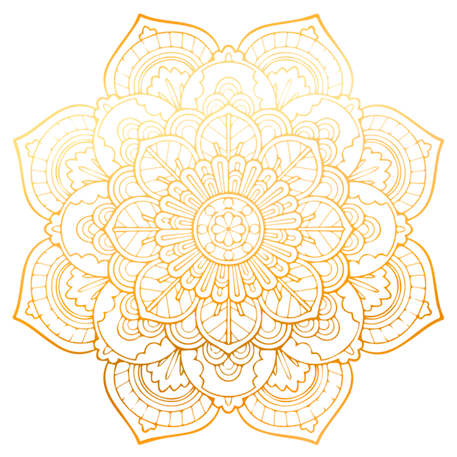Lorem ipsum
Lorem ipsum dolor sit amet consectetur adipisicing elit. Reprehenderit, consequatur! Veritatis, quaerat amet ab aut magni distinctio beatae aspernatur esse? Consequuntur quasi vel harum earum repellat facilis similique voluptatum dicta.
Scroll down
Lorem ipsum dolor sit amet consectetur adipisicing elit. Reprehenderit, consequatur! Veritatis, quaerat amet ab aut magni distinctio beatae aspernatur esse? Consequuntur quasi vel harum earum repellat facilis similique voluptatum dicta.

16th century saw the beginning of the collapse of the Pirivena education system. Sandesha poetry suggests that during the Kotte era, Pirivena education was of a very high standard. However, the political crises of that century, particularly from the Seethawaka period, and invasions by Western nations, led to the gradual decline of these major monastic educational institutions.
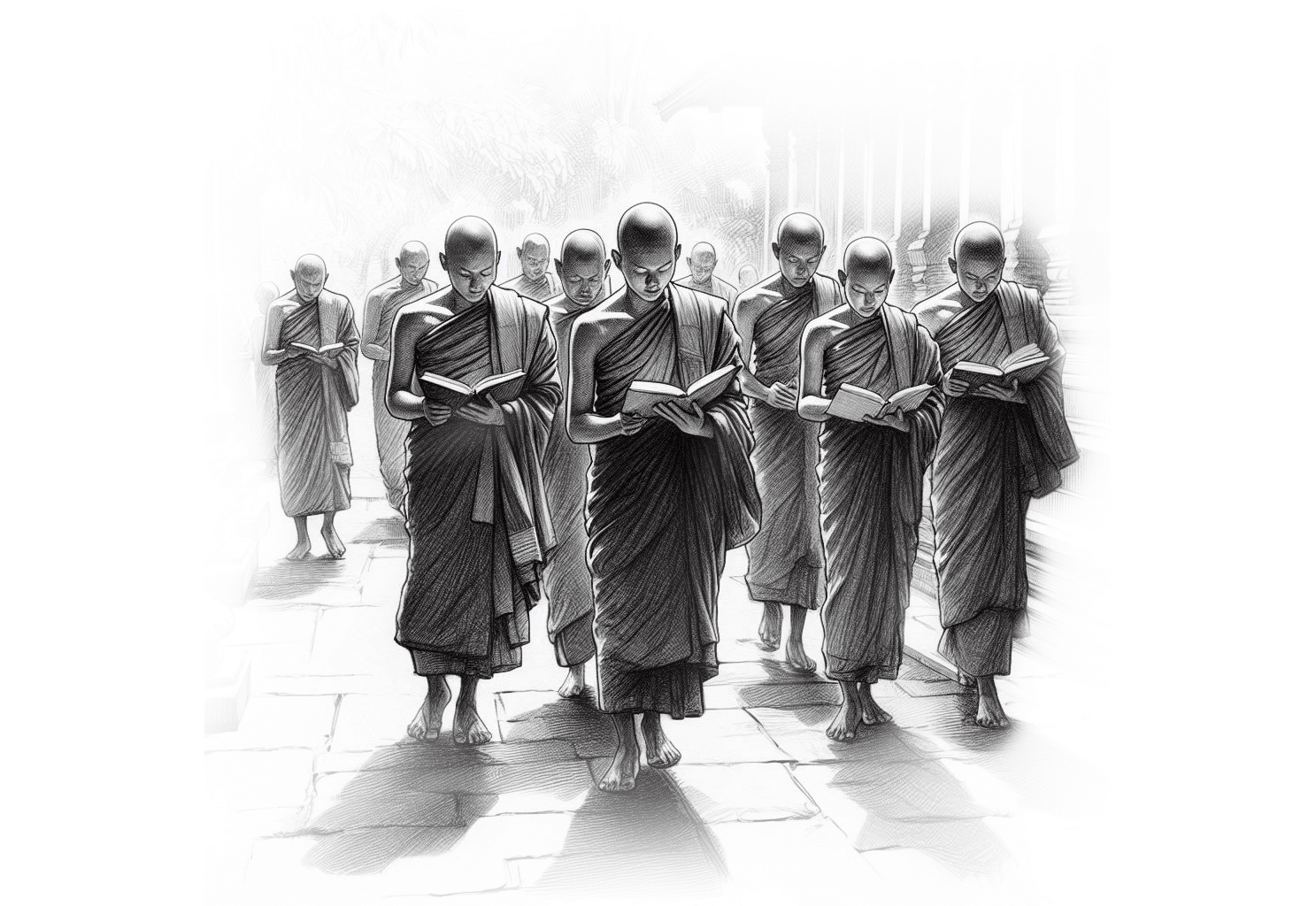
The Sinhalese kings of this era faced numerous challenges, including battles with Western nations, internal conflicts, and widespread epidemics. These adversities led to a decline in the Buddhist order and the deterioration of Buddhist education from the sixteenth century onward. By this time, the Upasampada had died out, further exacerbating the decline of the Buddhist monastic tradition ... Read all about the revival
... After the decline of the Lakdiva Bhikkhu community, the kings of the Kandy period: Wimaladharmasuriya I, Senarath, Rajasingha II, and Wimaladharmasuriya II undertook the noble mission of revitalizing the Buddhist order. They sent envoys to other Buddhist countries to bring Upasampada monks to re-establish the Upasampada in Sri Lanka. Despite their efforts, this revival was short-lived, and the previous decline soon resumed.
In the latter half of the sixteenth century, a luminary emerged to revive Sri Lanka's education and the Buddhist order: Welivita Sri Sarankara Sangharaja Thero. Born on June 19, 1689, as the son of a pious nobleman dispatched to Upcountry’s Tumpane and Wellassa, this prince Kulatunga entered the monastic order at Suriyagoda Vihara at the age of sixteen during the reign of King Sri Veera Parakrama Narendrasingha of Senkadagala (Kandy).
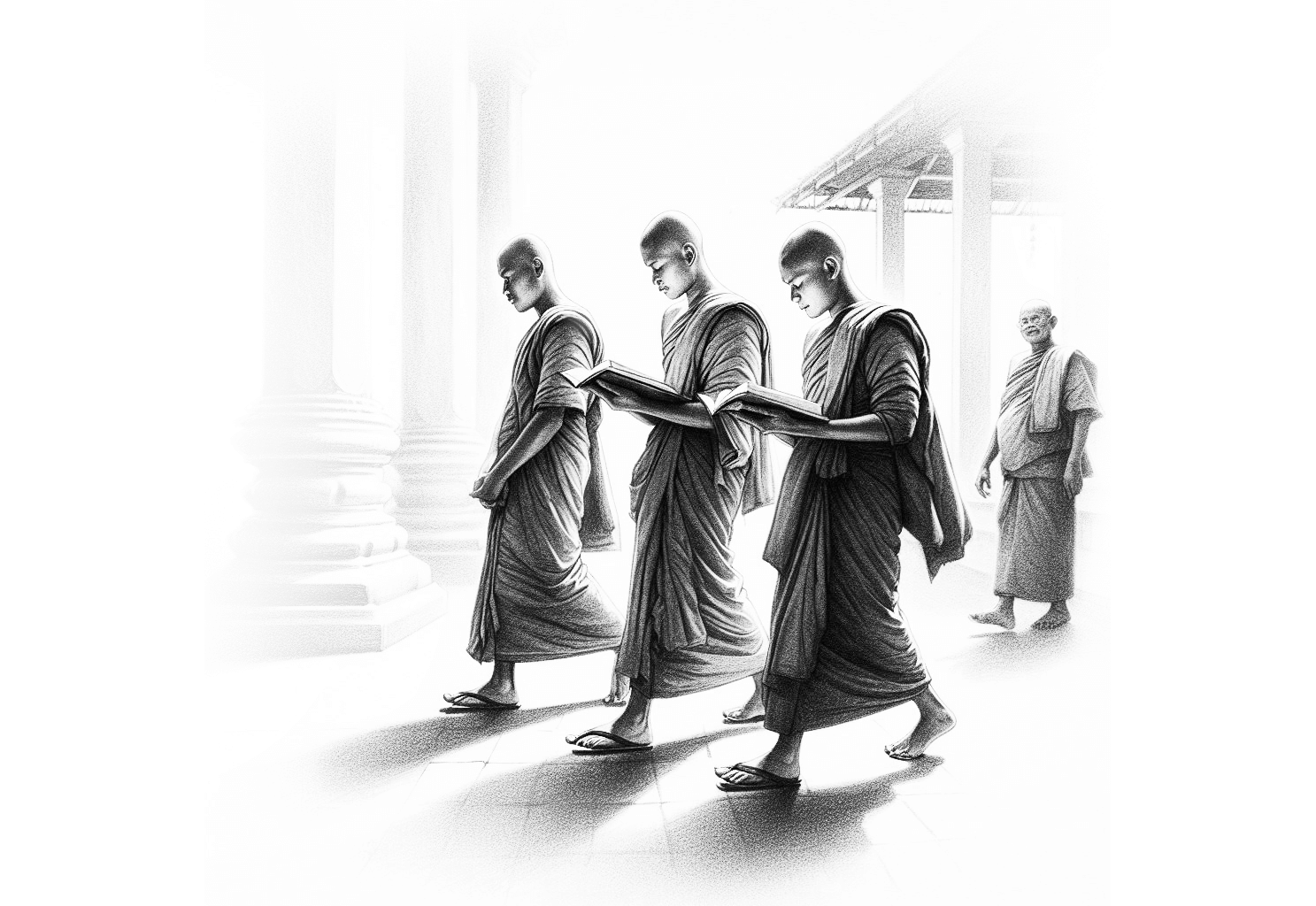
At the age of twenty-three, his teacher Suriyagoda Maha Thero was sentenced to death, but Sri Sarankara Sangharaja thero exhibited indomitable courage and self-improvement. He independently enhanced his language skills and studied Pali, Sanskrit, and Tripitaka Dharma. He mastered the Namakhanda of Balavatara and the Satipatthana Sutra from Levke Ralahami, who was imprisoned at the time, and also practiced Vipassana meditation. He continued his studies of the Balavatara with Palkumbure Aththadassi Thero, gaining a profound understanding of Buddhism.
Sri Sarankara Sangharaja formed an organization called "Silwath Samagama" with his fellow monks to spread Dhamma education. He traveled from village to village, delivering sermons to the laypeople and teaching them basic language skills such as writing, the alphabet, and grammar. This initiative led to a revival of education and society, which had been in decline.
King Sri Veera Parakrama Narendrasingha, the last of the Sinhalese monarchy, ascended the throne in 1706. Impressed by Welivita Sarankara Samanera, he commissioned him to compose two books, "Sarartha Sangraha" and "Hesajja Manjusava." Additionally, the king built a temple at Niyamakanda and provided further support for Sarankara Thero's education.
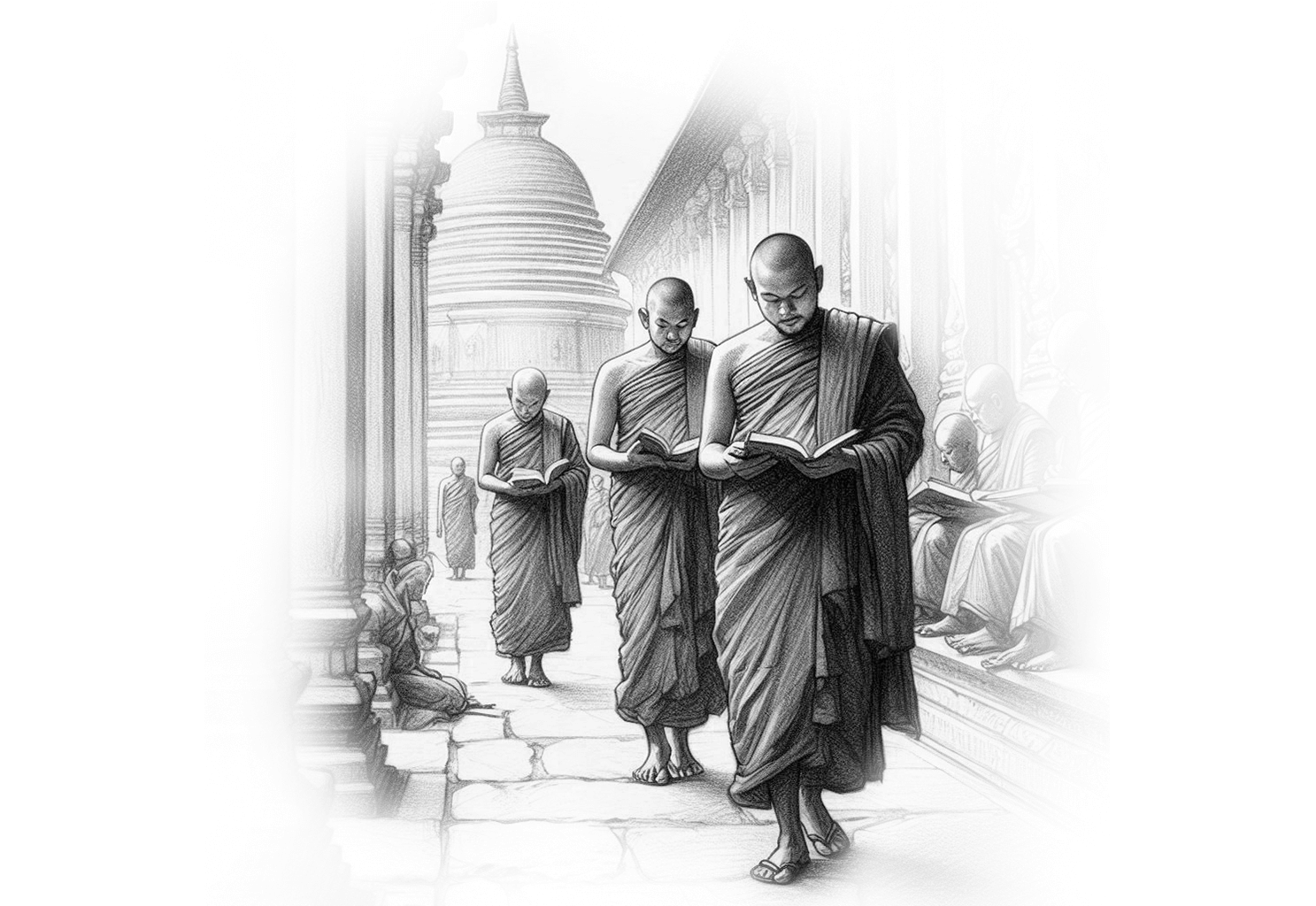
King Sri Vijaya Rajasingha of the Nayakkar dynasty, who ascended the throne after King Narendrasingha, appointed Welivita Saranankara Samanera as Rajaguru (the teacher for the kings). Following Sarankara Thero's advice, envoys were sent to Siam (now Thailand) to bring Upasampada monks to re-establish the ordination lineage, but the mission was not successful.
During the reign of King Keerthi Sri Rajasingha, who ascended the throne in 1747, at the urging of Saranankara Thero, the king dispatched a delegation to the King of Siam, Dharmika of Ayodhya Pura. The Upasampada ceremony was successfully performed, marking the restoration of Upasampada in Sri Lanka after a lapse of a century and a half. This pivotal event established the Syamopali Vamsika Maha Nikaya, which continues to this day. It marked a turning point in the modern Buddhist revival and national education renaissance. In recognition of his efforts, Sri Sarankara Thero, originally a humble resident of Welivita, was appointed Sangharaja (king of monks) by King Keerthi Sri Rajasingha.
... Through his unwavering dedication and with the support of King Sri Veera Parakrama Narendrasingha, King Sri Vijaya Rajasingha, and King Keerthi Sri Rajasingha, Saranankara Sangaraja Thero successfully restored education and Buddhism in the kingdom of Senkadagala. His relentless efforts culminated in the establishment and revitalization of the Buddhist order in Sri Lanka once more, marking a significant achievement in the nation's history.
Sri Sarankara Sangharaja Thero founded the first Pirivena at Niyamakanda Viharaya in Kandy, where he resided.
Sitinamaluwe Dhammajoti Thero was a disciple of Sarankara Sangharaja Thero. Kandurupokune Suvannajoti Thero studied under Sitinamaluwe Dhammajoti Thero. Karathota Dhammarama Thero, in turn, was a student of Kandurupokune Suvannajoti Thero. Dhammarama Thero's disciple, Galle Medhankara Thero, established Sri Lanka's second Pirivena at Raja Maha Vihara in Palamadulla, Ratnapura.
Walane Sri Siddhartha Thero was a student of Galle Medhankara Thero. It was Sri Siddhartha Maha Thero who founded the Parama Dhamma Chetiya Maha Pirivena in Ratmalana.

In March 1811 Siddhartha Thero was born into a noble family in the prosperous village of "Walana" in Panadura Thotamuna, Kalutara District, Western Province. Showing a deep passion for Buddhism from a young age, this young prince entered the monastic order at twelve and studied Dhamma under Gunarathana Thero and Nedivata Revata Thero. Seeking further knowledge, he journeyed to Pelmadulla Raja Maha Vihara to learn from the esteemed Pandita Medhankara Maha Thero in Dharma, Discipline, and Phonetics. Returning to Walane temple in 1838, he began teaching Dhamma to both monks and lay students.
In 1841, upon invitation from several prominent families in the capital who were impressed by him, Siddhartha Thero visited Ratmalana and established the Parama Dhamma Chetiya Maha Pirivena.
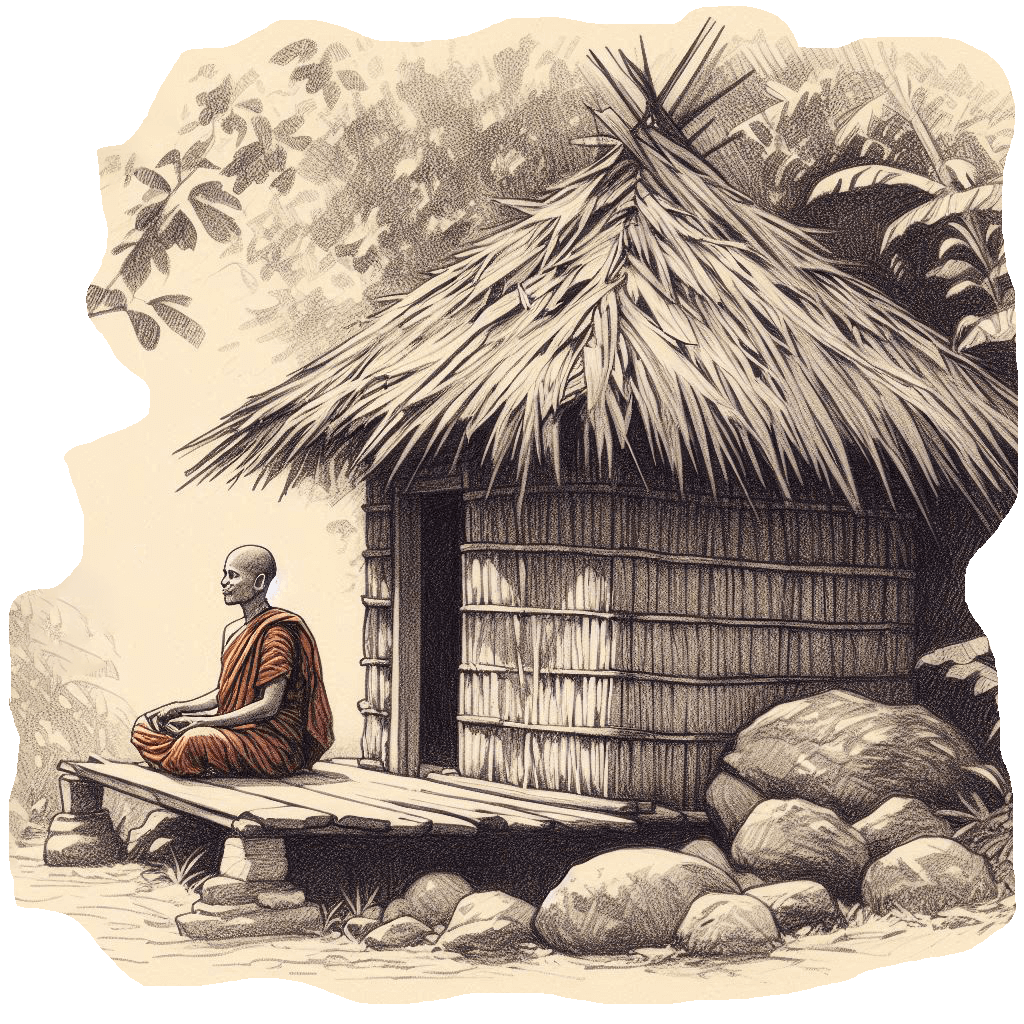
In May2385 BE and 1841 AD Sri Siddhartha Maha Thero, renowned as a religious learned monk, arrived in Ratmalana. His visit came in response to an invitation extended by several devout noble families from the capital who were deeply impressed by his fame.
Among this elite group were notable figures like Don Jeranimus Seneviratne Ralahami, also known as Arachchi Mahathmaya or Panagoda Arachchi, Jayasuriya Arapchige Thedonis Prera Appuhami, Don Philip de Silva Epa Appuhami, and Don Prolis Lekam Ralahami of Ratmalana. They had a collective intention to establish a prestigious college near Colombo under the guidance of Walane Siddhartha Thero, who was renowned for his dedication to dharma, discipline, and linguistic scholarship aiming to foster intellectual pursuits and acquire knowledge.
A wealthy and devout man named Thedonis Appuhami in Colombo expressed interest in purchasing vacant land in front of the "Norman School" to build a monastery as a generous offering. However, Siddhartha Thero, with foresight, declined the offer, foreseeing the potential urban development of Colombo over the next fifty years. He believed that a bustling city environment would not be conducive for the peaceful training of young student monks.
However, Don Jeranimus Seneviratne Ralahami invited Siddhartha Thero to offer a piece of land to make a monastery in the village of Ratmalana, which was the home of a few wealthy elite families with a rural environment at that time but was also home to a few philanthropic wealthy elite families.
Upon arriving in Ratmalana, Siddhartha Thero initially lived in a small abode made of coconut branches, supported by the said virtuous and pious individuals. This marked the humble beginnings of Parama Dhamma Chetiya Maha Pirivena.
From this small abode, teaching began with two or three students, and the main purpose of Pirivena was to teach the threefold Buddhism correctly to the student monks. In a very short period of time, its fame grew and it grew to seventeen student monks, and among those seventeen, the most prominent monks were Sri Sumangala Thero of Hikkaduwa, Sri Dhammaloka Thero of Ratmalana, Sangharakkhita Thero of Denipitiya, Atthadassi Thero of Morapitiya, Devarakkhita Thero of Batuantuda, Sarankara of Baddegama. Thero, Koggala Kavithilaka Thero, Udugampola Ratanapala Thero, Medagama Sumana Thero, Ganegama Upananda Thero, Labugama Thero and Suriyagoda Sonuttara Thero.
Those student monks from Parama Dhamma Chethiya Maha Pirivena went on to play significant roles in the Buddhist renaissance of Sri Lanka. Among them, Sri Sumangala Nahimi of Hikkaduwa distinguished himself by supporting the Buddhist side in pivotal religious debates such as the Panadura Controversy and Baddega Controversy. He later founded Vidyodaya Pirivena in Maligakanda in 1873. Similarly, Sri Dhammaloka Nahimi of Ratmalana established Vidyalankara Pirivena in 1875, which evolved into Kelaniya University. Thus, Parama Dhamma Chethiya Maha Pirivena is celebrated as the cradle of numerous Buddhist educational institutions, including Vidyodaya Pirivena in Maligakanda, Colombo, and Vidyalankara Pirivena in Peliyagoda.
However, Siddhartha Thero maintained his connection with Walana temple and continued to reside both in Walana and Ratmalana. A group of devotees, led by Don Prolis Lekam Ralahami, approached Siddhartha Thero and urged him to permanently settle in Ratmalana. In 1849, Siddhartha Thero accepted their invitation and moved to Ratmalana Parama Dhamma Viharaya for permanent residence.
As the fame of Parama Dhamma Chetiya Maha Pirivena grew day by day, the number of students exceeded one hundred. A group of devoted donors purchased four adjacent pieces of land and donated them to the temple. A beautiful monastery, consisting of three buildings, was constructed and inaugurated. From then on, it became known as "Parama Dhamma Chetiyarama," a name rich in significance. During the inauguration ceremony, it is recorded that pirith chanting was conducted continuously for three months. The Dharma hall, where sermons were delivered, was said to be seven stories tall, and one hundred monks participated in the pirith chanting ceremonies held there.
Walane Sri Siddhartha Thero, who illuminated the world with the Dhamma, passed away in 1868, exemplifying the Buddha's teaching on impermanence.
After Walane Sri Siddhartha Maha Thero, Hikkaduwe Sri Sumangala Maha Thero became the Chief Incumbent of Parama Dhamma Chetiya Pirivena. From 1868 to 1870, he filled the gap left by Siddhartha Thero, providing Dharma education to both lay and monastic students. However, as Buddhist influence in the capital was waning, he accepted an invitation from the Buddhist elites in Colombo and founded the Maligakande Vidyodaya Pirivena in 1873, which later became an internationally renowned Buddhist institute. Despite his new responsibilities, Hikkaduwe Sri Sumangala Maha Thero maintained his connection with Parama Dhamma Chetiya Maha Pirivena. He regarded Ratmalana as an ideal place for training promising young novice monks and often directed them to Parama Dhamma Chetiya Pirivena to study Dhamma.
After Sumangala Maha Thero, the position of Chief Incumbent of Parama Dhamma Chetiya Pirivena was held by Morapitiye Atthadassi Thero, Denipitiye Sangharakkhita Thero, and Ratmalane Sumanatissa Thero from 1870 to 1887. All three were students of Siddhartha Maha Thero and continued his legacy by leading the Pirivena and imparting Dharma education.
Walane Dhammananda Maha Thero, a brilliant student of Sri Siddhartha Thero, assumed the position of Chief Incumbent of Parama Dhamma Chetiya Pirivena in 1887. He had also mastered the Dhamma under Sumangala Maha Thero and had served as a lecturer at Vidyodaya Maha Pirivena. Walane Dhammananda Maha Thero accepted the position of Chief Incumbent at the invitation of Buddha Sasana Maha Sura Senapati Rajadattiya Namopalakshitha Dharmaratne Padithuma. During his tenure, the "Parama Dhamma Chetiyaramaya" began to be known as "Parama Dhamma Chetiya Pirivena," marking a new era in its history.


During Dhammananda Thero's tenure, the sacred Buddha statue, believed to have been established by the great King Dutugemunu in a rock cave in Wilgammula, Kurunegala District, was brought to the Parama Dhamma Pirivena's grounds. A Buddha Mandira was constructed to house this revered statue. Known today as the "Menik Pilimaya (Gem Statue)," it is believed to contain a Blood Ruby as a treasure of the omniscient relics. In 1892, the Burmese Queen Singdunmibaya had this statue plated with gold. She also sent two other marble Buddha statues, which are now placed on both sides of the gem statue.
Not long after, the King of Cambodia visited Ceylon on his way to see Queen Victoria and arrived in Colombo. During his visit to Parama Dhamma Chetiya Pirivena, he made a generous donation for the construction of a Dharma Hall, which was lacking at that time. The hall was completed with intricately engraved wooden structures and foreign roofing tiles ... Continue reading the history
... The era of Dhammananda Thero was a brilliant period for Parama Dhamma Chetiya Pirivena. During this time, a large number of laypeople and monks studied the arts there. Notable scholars such as Rajakiya Panditha Vidurupola Piyatissa Maha Thero, Gabbela Sirinivasa Thero, Matale Dhammasiddhi Thero, and Pimbure Vachissara Thero were among those who studied at the Pirivena under Dhammananda Maha Thero. Rajakiya Panditha Vidurupola Piyatissa Mahanayake Thero brought great fame to the Pirivena by excelling in the Oriental exam with honors in Sinhala, Pali, and Sanskrit. He was the first in the country to receive the Pandit degree with the prestigious Ubhayasekhara gold seal, thereby enhancing the reputation of Parama Dhamma Chetiya Pirivena.
Thus, Walane Dhammananda Maha Thero passed away in 1911, marking the end of a brilliant era for Parama Dhamma Chetiya Pirivena. In the same year, Pandita Shiromani Hikkaduwe Sri Sumangala Maha Thero, also passed away, signifying a significant loss for the Buddhist community.
Dr. Maitipe Wimalasara Thero has played a pivotal role in revitalizing the Parama Dhamma Chetiya Maha Pirivena, which was facing decline after the tenure of Mapalagama Vipulasara Na Thero. A dedicated student of Mapalagama Vipulasara Na Thero, Dr. Wimalasara Thero was elected as the Chief Incumbent and Principal of the Pirivena in 2015, with unanimous approval from the Sangha Council. His leadership has reaffirmed the continuity and significance of the Pirivena in contemporary times.
Dr. Maitipe Wimalasara Maha Thero is a distinguished international Buddhist missionary. He earned his bachelor's and master's degrees from esteemed Calcutta University and Baranas Hindu University Varanasi in India. Throughout his career, he has served as the chief administrator of the Buddhagaya Temple in India, the chief secretary of its Buddhist council, and the inaugural Chief Incumbent of the Dharma Vijaya Buddhist temple in Los Angeles, USA. While actively engaged in propagating Dharma internationally, particularly in the Western world, he accepted the esteemed position of Chief Incumbent to rejuvenate his alma mater, Parama Dhamma Chetiya Maha Pirivena, reaffirming his commitment to preserving and propagating Buddhist teachings.
Wimalasara Thero, like his mentor Vipulasara Thero, possessed strong domestic and international relationships along with exceptional leadership qualities. Following in his Vipulasara Thero’s footsteps, he embarked on a significant mission to continue and expand the grand vision initiated by his mentor. One of his primary initiatives was the restoration of the Sanghavasa building, a revered symbol of recognition, grace, and scholarly excellence at Parama Dhamma Chethiya Maha Pirivena.
Wimalasara Thero, who holds several executive positions in international forums, organizations, and councils, has revitalized the temple’s Benefactors' Council, Buddhist Ladies' Society, and other community groups. Through his efforts, Parama Dhamma Chetiya Maha Pirivena has transformed into a center for Buddhist education, social services, and reconciliation. His leadership has brought together benefactors and communities, both local and international, ensuring the Pirivena's role as a hub for education and communal harmony.
Walane Sri Siddhartha Thero, a disciple in the lineage of the Asarana Sarana Sarankara Sangharaja Thero, went to Ratmalana in May 1841 to observe the Vassa Retreat. There, he commenced his retreat in a modest shelter made from coconut leaves and began imparting Dhamma education to a small group of novice monks, thereby laying the foundation for the Parama Dhamma Chetiya Maha Pirivena. Read more
Hikkaduwe Sri Sumangala Maha Thero, among the first seventeen students of Parama Dhamma Chetiya Maha Pirivena, played a pivotal role in securing victories for the Buddhist side in religious debates such as the Panadura Controversy and Baddega Controversy. In 1873, he established the Maligakanda Vidyodaya Pirivena in Colombo, sparking a renaissance in Dharma education across the island. Read more
After Hikkaduwe Sri Sumangala Thero, Morapitiye Atthadassi Thero, who was among the first student monks of Parama Dhamma Chethiya Maha Pirivena, assumed the position of Chief Incumbent from 1870 onwards.
After Morapitiye Atthadassi Thero, Denipitiye Sangharakkhita Thero, a prominent figure among the initial student monks of Parama Dhamma Chetiya Maha Pirivena, assumed the role of Chief Incumbent.
Ratmalane Sumanatissa Thero, another student of Walane Siddhartha Thero, succeeded Denipitiye Sangharakkhita Thero.
During the tenure of Walane Dhammananda Thero, a distinguished disciple of Sri Siddhartha Thero, Parama Dhamma Chetiya Pirivena flourished. It was under his leadership that the Pirivena, previously known as "Parama Dhamma Chetiyarama," was established as "Parama Dhamma Chetiya Pirivena." Additionally, during his tenure, the sacred "Gem Statue" was brought to the temple, and an elegant Dharma hall was constructed. Read more
After Walane Dhammananda Maha Thero, Aruggoda Seelananda Thero assumed the position of Chief Incumbent.
After Aruggoda Seelananda Thero, Bendiyamulle Dhammarathana Thero, a former student of Parama Dhamma Chetiya Pirivena, became the Chief Incumbent. In 1925, he founded Pahalgama Vidyaravinda Pirivena in Gampaha.
Bendiyamulle Dhammarathana Thero was succeeded by Pimbure Vachissara Thera. In 1930, he founded Agalawatta Prathiraja Pirivena.
After Pimbure Vachissara Thero, Yatipawwe Medhananda Thero assumed the position of Chief Incumbent.
Sooriyagoda Sumangala Thero, who was a former student of Parama Dhamma Chetiya Maha Pirivena, was a very talented monk who also held the position of Chief Incumbent. He made history by becoming the first monk to pass the Bachelor of Arts (BA) examination in English medium. Additionally, he worked as a lecturer at the University of Ceylon and had the honor of being the first monk to travel to England for postgraduate studies.
During the challenging period of the Second World War, it was Walane Sattissara Maha Thero who upheld the Pirivena with unwavering dedication. Under his leadership, the dilapidated Pirivena building and Sri Siddhartha Library were restored, with the assistance of Sir John Kothalawala and His Majesty the King of Cambodia. Additionally, an elegant stupa was erected within the Pirivena grounds. Another significant achievement during his tenure was the establishment of the Piriven Teacher Training College at Parama Dhamma Chetiya Pirivena, marking a crucial milestone in national education. Read more
Parama Dhamma Chetiya Maha Pirivena gained international renown during the esteemed tenure of Mapalagama Vipulasara Thero, and regarded as its golden era. Apart from his scholarly achievements, Vipulasara Thero was an exceptional artist and was the one designed the state emblem of the Republic of Sri Lanka and meticulously restored the damaged nose of the Samadhi Buddha statue in Anuradhapura. His contributions extended beyond national borders as he played a pivotal role in promoting Sri Lankan culture abroad, earning him the epithet of "Unofficial Cultural Ambassador." Read more
After Mapalagama Vipulasara Maha Thero, Madapatha Dhammasara Thero, one of his esteemed students, assumed the position of Chief Incumbent. Renowned not only for his spiritual leadership but also for his artistic talents, Madapatha Dhammasara Thero was celebrated as a skilled songwriter and painter and it was he who established the studio in Pirivena.
Dr. Maitipe Wimalasara Maha Thero, a disciple of Mapalagama Vipulasara Maha Thero, has been an international Buddhist missionary. He pursued higher education at Calcutta University and Varanasi Hindu University, dedicating himself to international dharma propagation. His roles included serving as the chief administrator of Buddhagaya Temple in India, chief secretary of its Buddhist council, and the inaugural Chief Incumbent of Dharma Vijaya Buddhist Temple in Los Angeles, USA. While actively engaged in spreading Dharma globally, especially in the Western world, he accepted the esteemed position of Chief Incumbent at Parama Dhamma Pirivena. Continuing the grand legacy of his mentor, he directs Parama Dhamma Chetiya Maha Pirivena not only as a distinguished Buddhist education institute but also as a center for social services and fostering harmony in society. Read more
